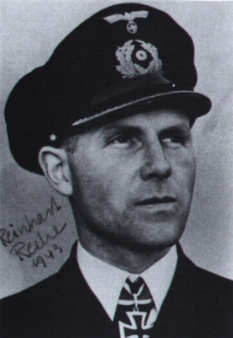1. Origins
The development of the German U-boat fleet in 1935-39 was based entirely on the First World War principles. However, it had already been known that England was in possession of the underwater location device (ASDIC) which was to counter the submarine threat. Not surprisingly, the Second World War started with great speculations about the effectiveness of the U-boats.
Soon it had become apparent, that ASDIC was not so effective as claimed and certainly it was of no use against a surfaced U-boat. And it was a surfaced group attack at night, known as Rudeltaktik, that proved itself so lethal to convoys. Without a surface location device the escorts were not able to see a narrow silhouette of the surfaced U-boat at night or in bad weather. The same applied to aircraft.
The U-boat training programme was adopted to the principle of Rudeltaktik. The emphasis was on the skills of the commander and crew as it was believed that the experience was the main decisive factor in the battle.
The technical development was somewhat left behind. Doenitz got acquainted with Professor Walter and was quite impressed with the idea of a closed circle engine. Such an engine required no air intake and therefore could run when a submarine was submerged and at the same offered enough power to achieve speed around 25 knots. The idea was further developed and in 1940 the prototype V80 indeed travelled submerged at the speed of 26 knots! Therefore, the concept was regarded as the right answer for the need of high underwater speed. The amount of technical difficulties made it clear that it would take a long time to convert the prototype into an ocean-going attack U-boat. At that time, however, no one seemed to be worried as the conventional U-boats still enjoyed a high rate of success when operating on the surface at night.
However, there were early warnings that this situation might change dramatically. On the pitch black night 30th November - 1st December 1941 while attempting to penetrate the Straits of Gibraltar, U-96 was accurately located and bombed by the radar-equipped Sqdn. 812 Swordfish. Her commander, Heinrich Lehmann-Willenbrock, insisted that the aircraft must have been using a new location device. In spite of the fact this statement was made by one of the most experienced U-boat commanders, no one believed it was the case. In particular, no one believed an accurate radar set can be so small, it could fit in an aircraft.
Another warning came also in December 1941. It was the convoy battle around HG-76. The convoy was protected by an aggressive support group including an aircraft carrier, lead by an ASW expert, Capt. Walker. Although a total of 14 U-boats were assembled in the area, only 5 ships were sunk at a cost of 4 U-boats directly involved in the operation (U-131, U-434, U-574 and U-567). A shocking exchange rate which later became normal. In fact a few more were sunk in the area at the same time. U-567 was commanded by Engelbert Endrass, an experienced Knight Cross Holder, while other boats by relatively inexperienced commanders. BdU was convinced that the success was entirely depending on the experience of attacking U-boats. This is why when Doenitz was sending Endrass, in whom he had great confidence, he had also signalled: "Hold on to that convoy. I'm sending Endrass". In vain.
There were a few more warnings. It was clearly demonstrated that with the arrival of the radar-equipped aircraft and escorts, especially when put together in a support group with a carrier, the conventional U-boats may achieve nothing but heavy losses. Unfortunately for the Germans, these warnings were not taken into consideration serious enough to affect the development plans for new U-boats, their weapons and electronic equipment. It was almost a year later, when the loses in the North Atlantic convoy battles became alarmingly high, when something finally happened.
November 1942 was the best month in the in terms of tonnage sunk during the U-boat War. The majority of sinkings happened along the North Atlantic convoy routes, in the so-called Atlantic Gap, out of the reach of land-based Allied aircraft. U-boats returned to the North Atlantic in the second half of 1942, when gradually stronger US anti-submarine forces made operations in the Western Atlantic and the Caribbean impossible. However, the British had enough time to increase the number of escorts, aircraft and develop new techniques. The Germans also increased the number of U-boats and in the second half of 1942 on average a hundred were at sea every day. All these factors inevitably lead to fierce convoy battles of previously unknown proportions.
Although the overall sinkings increased, the average tonnage sunk daily per U-boat at sea dropped dramatically. Due to strong convoy escort and increasing air cover relatively very few U-boats managed to engineer an attacking position and score a hit. It has been clearly demonstrated that the U-boat Arm needed boats with better underwater performance - greater range (particularly to pass the dangerous Bay of Biscay) and higher speed (to evade escorts and gain an attacking position underwater). Therefore, a conference was organized by BdU in November 1942 in order to discuss possible solutions to the dangerous situation. Professor Walter and representatives of the Naval Construction Office were invited. This conference turned out to be a turning point in the U-boat technical development.
... read on about the development of the Elektro boats



